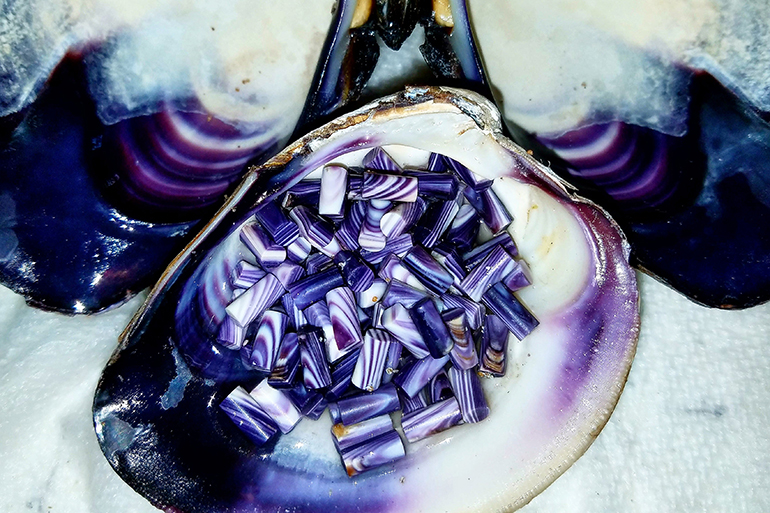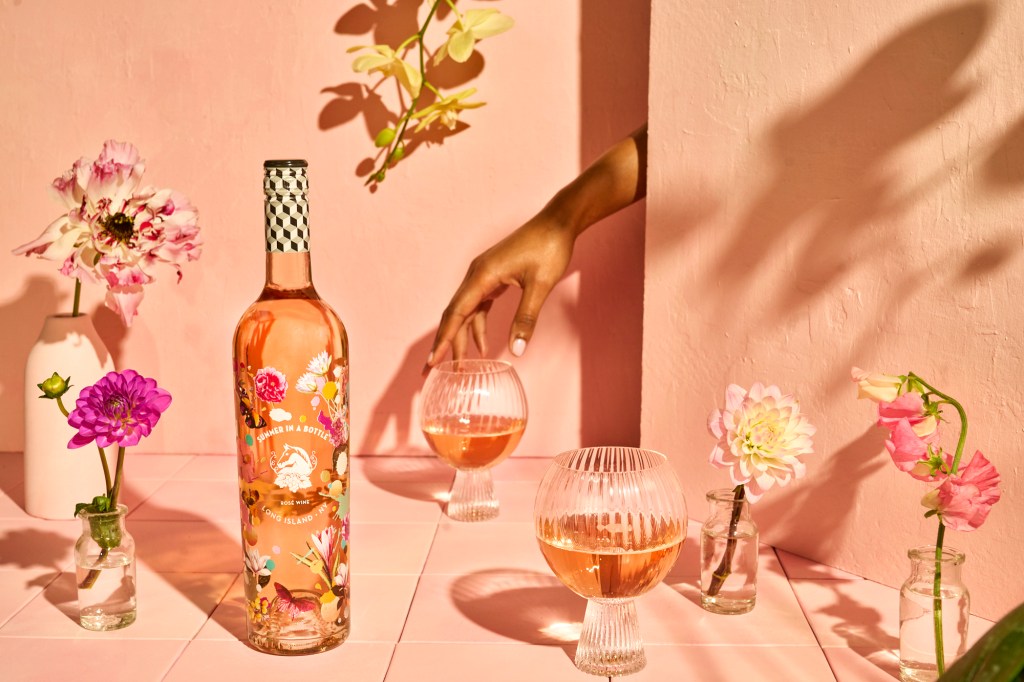Wampum: Treasure at the Shinnecock Indian Powwow

First-time visitors to the Shinnecock Indian Powwow, now in its 73rd year, are in for a culture shock in the best way. The word “powwow” is derived from the term “Pau Wau” which means “the leader of ceremonies” in the dialect of the Shinnecock and other New England tribes. It has since shifted to refer to a festival or gathering of Native American people, and the Labor Day weekend festival delivers this in spades. Hundreds of dancers from across the country will gather to join in the Grand Entry and to compete in a variety of categories, in which they’ll don brightly colored regalia and plumage, moving rhythmically to a whirlwind of forceful drumbeats and powerful voices lifting their prayers to the heavens.

Traditional Native American dancing is undoubtedly the main attraction of the annual event, but venture into any of the dozen upon dozens of vendor tents, and you’re likely to discover a plethora of purple and white jewelry that’s as rich in Shinnecock culture as it is in stylishness. “Wampum is a symbol of our history and culture in the part of the world that our people are happy to share,” says Shane Weeks, a Shinnecock wampum maker and member of the Southampton Town Arts and Culture Committee.
Derived from quahog shells harvested from local beaches, wampum beads have been a part of Shinnecock culture—and other Northeast Native American tribes—for centuries, aiding in recordkeeping, storytelling and displays of social status and character. Weeks explains that each color of the beads represents a different aspect of Shinnecock culture. “The white part represents purity and health; the purple represents the blood of the people; and the black represents war,” he says. “Today, all of the cultural significance of wampum remains, though it is used more widely today, as a form of art.”

Contrary to popular belief, the Shinnecock people never saw wampum as a form of currency or something to trade among themselves. It wasn’t until Southampton Town and other colonies adopted it as form of currency in the early 1600s, that the Shinnecock began trading it. According to Weeks, the exchange rate was four pence for a 16-inch strand of white beads and eight pence for a strand of purple beads, due to the increased rarity.
Quahog shells couldn’t be bartered in their base form, however. Carving them into beads was—and still is—a delicate and tedious process. Originally created using grooved stones to grind shell fragments into cylinders, modern day techniques now use power tools, but the process still takes a great deal of time and care. “It can be compared to working with glass, as any wrong move will result in a shattered piece,” Weeks warns, recalling his time working at the Wampum Magic Factory on the Poospatuck Reservation in Mastic.
In addition to dancing and vendors offering wampum, clothing and other crafts, the powwow offers sunset fire lightnings, traditional refreshments and a canoe race. Grounds open at 3 p.m. on Friday, and 10 a.m. on Saturday, Sunday and Monday. On Sunday at 7 a.m., the fourth annual Shinnecock Whalers Mishoon Race sets off from Cuffee’s Beach on Little Beach Road, honoring the nation’s legacy of skilled canoers.
To learn more, visit the Powwow Facebook page at facebook.com/groups/shinnecockpowwow.



